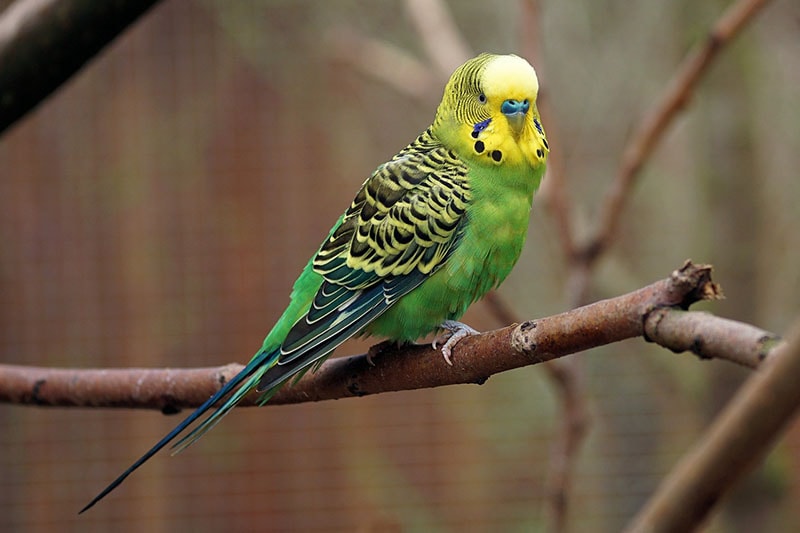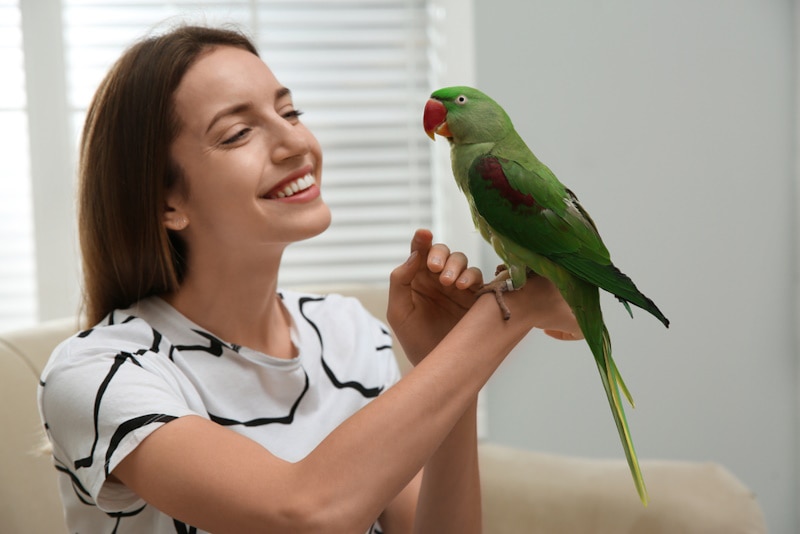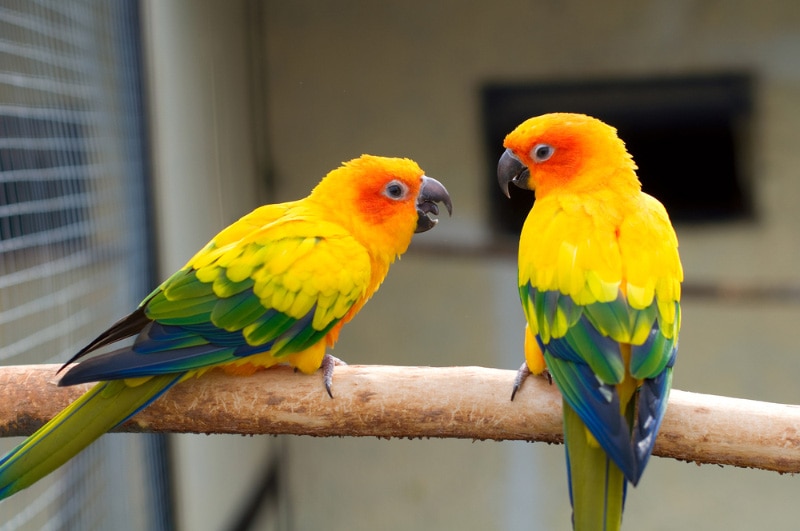8 Best Parrots for Apartments: Pictures, Facts, & History
By Jessica Kim
Updated on
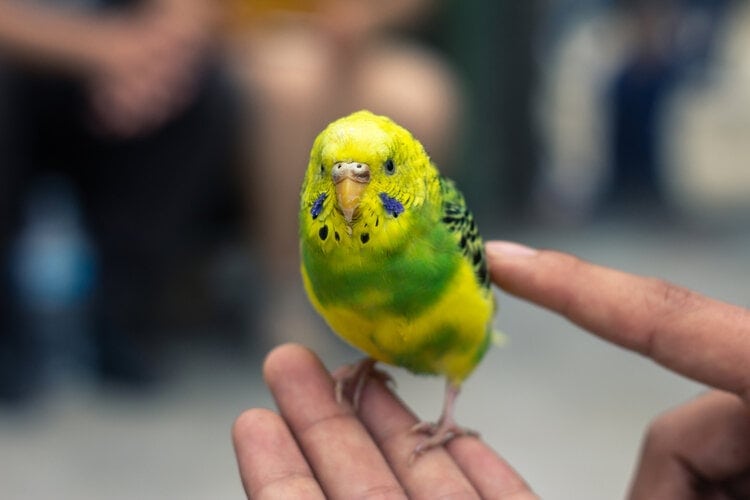
Parrots may be smaller than cats and dogs, but some still aren’t well-suited for apartment life. Factors like space and noise level contribute to a parrot’s ability to live happily in an apartment or condominium.
Fortunately, you can find parrots of different sizes and colors that make excellent apartment dwellers. Here are some of the best parrots for apartment life that are worth getting to know.
What Makes a Parrot Good for an Apartment?
The parrots on our list were selected based on several key factors. We’ve considered their size, activity level, and general temperament. We’ve also looked into how well these parrots can adapt to living in smaller spaces.
Most of the parrots on our list tend to be quieter and have calmer temperaments. They’re also quite confident and not easily scared or bothered by loud noises commonly occurring in larger cities, like sirens or honking car horns.
The 8 Best Parrots for Apartments
1. Senegal Parrot
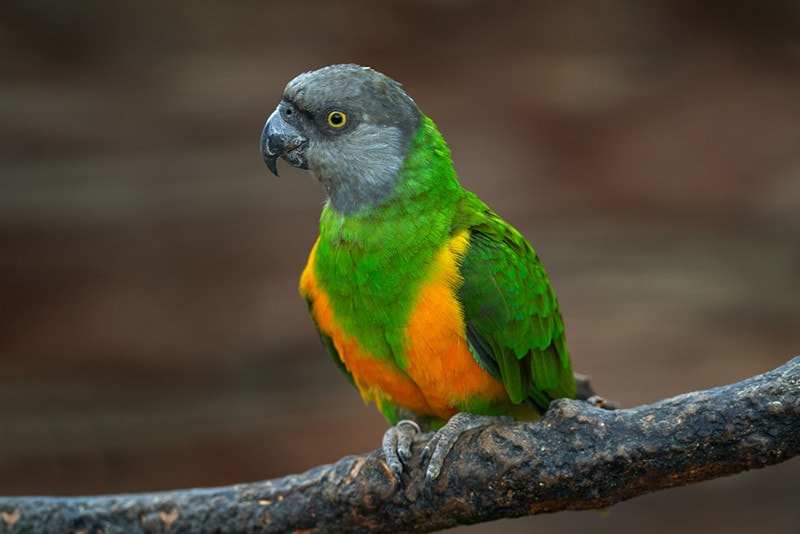
| Origin: | West Africa |
| Lifespan: | 45–50 years |
| Height: | 9 inches |
Senegal Parrots are some of the most popular pet parrots for apartments because of their quietness and calm temperaments. They’re known to be very sweet and affectionate and can develop strong bonds with humans. They often enjoy perching on their favorite people’s shoulders and accompanying them wherever they go.
While they aren’t the chattiest species, Senegal Parrots can learn a few words. They rarely scream and much prefer clucking and whistling. So, they’re not likely to cause a disturbance for your neighbors.
2. Mustache Parakeet

| Origin: | China and Indonesia |
| Lifespan: | 20–25 years |
| Height: | 13–16 inches |
Mustache Parakeets have both a charming appearance and personality. These birds are native to China and Indonesia, and wild populations are known to be hardy and adaptable urban dwellers. So, your Mustache Parakeet can adjust well to the busier and noisier city life.
Mustache Parakeets are also very playful and love playing games with people. They’re highly intelligent and can pick up many words. They do like to chat, but they’re not loud squawkers, as they prefer to talk or whistle.
3. Green-Cheeked Conure

| Origin: | South America |
| Lifespan: | 25–30 years |
| Height: | 10–11 inches |
While some conures are notorious for being loud, the Green-Cheeked Conure is a relatively quiet bird. These parrots can be chatty, but they don’t usually resort to squawking or screaming. They’re also very sweet and mild-mannered.
Green-Cheeked Conures are intelligent and curious. So, they must be supervised at all times whenever they’re spending time out of their cages. They love to play, and boredom can cause them to become more vocal. Therefore, it’s essential to provide plenty of playtime and enrichment activities to keep a Green-Cheeked Conure happy.
4. Cockatiel
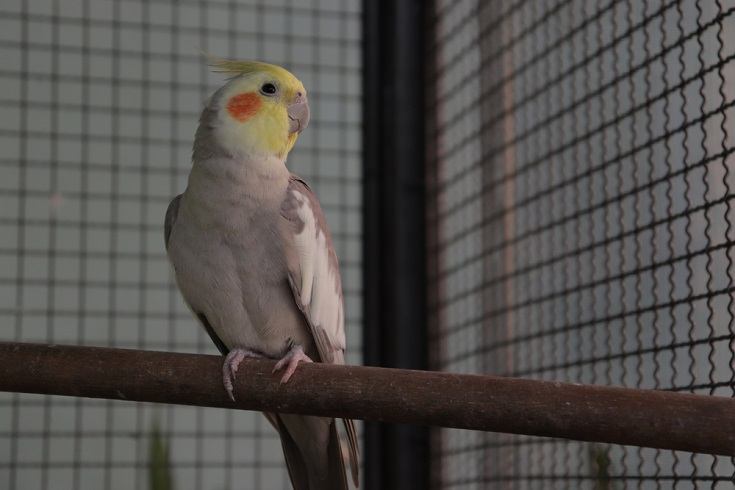
| Origin: | Australia |
| Lifespan: | 10–14 years |
| Height: | 12–14 inches |
Cockatiels are popular choices for first-time bird owners because of their easygoing personalities. They’re also known to be very affectionate and enjoy playing and interacting with people.
Cockatiels are talented whistlers and can also learn a few words. Male Cockatiels, in particular, enjoy whistling and will even whistle when they see their favorite people. While they can chirp and whistle a lot, they’re still considered to be quiet parrots because they rarely ever squawk or scream.
5. Pionus Parrot
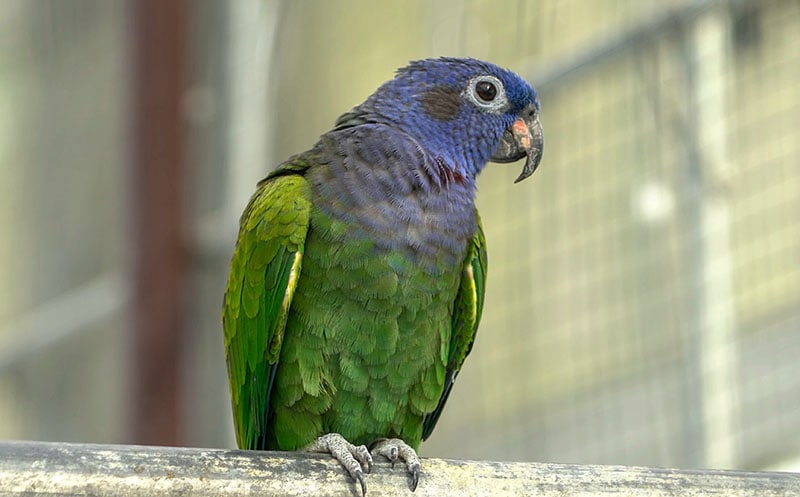
| Origin: | Central and South America |
| Lifespan: | 20–25 years |
| Height: | 11–12 inches |
Pionus Parrots are known to be very quiet, introverted birds. They can form strong bonds with people and can be affectionate, but they’re often standoffish and disinterested in new people.
Pionus Parrots can enjoy keeping to themselves and aren’t as demanding of attention as many other parrots can be. But they’re still attentive and enjoy interacting with people. Their overall independent and reserved personalities make them popular choices for apartment living.
6. Bourke’s Parakeet
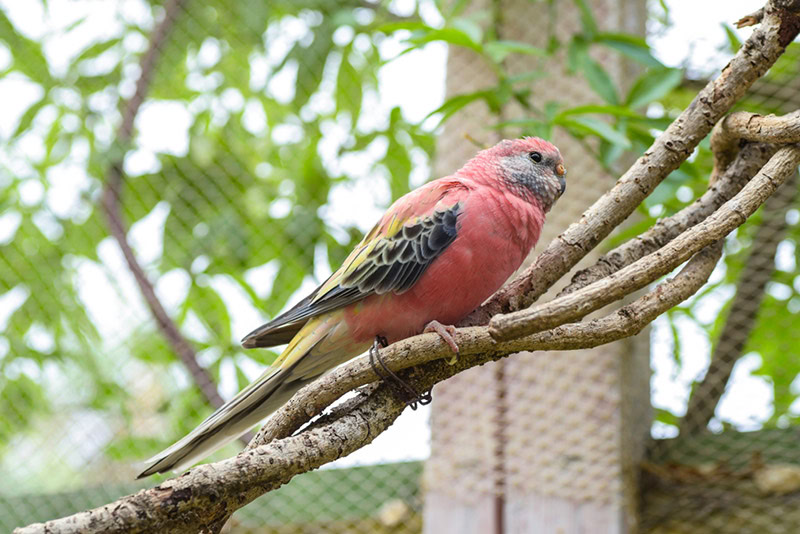
| Origin: | Australia |
| Lifespan: | 5–8 years |
| Height: | 7–9 inches |
Bourke’s Parakeets are considerable choices for those who are new to caring for parrots. They’re calm and easygoing, and they don’t tend to make a lot of loud noises. They’re also relatively small and can live in individual cages. However, they like to fly, so they must be let out a couple of hours a day to stretch their wings and explore.
Bourke’s Parakeets are also very social and enjoy human companionship. When they’re not flying around, they’ll often perch on your shoulder, and they expect their affection to be reciprocated.
7. Parrotlet

| Origin: | Ecuador and Peru |
| Lifespan: | 15–20 years |
| Height: | 4–5 inches |
Parrotlets are the smallest of parrots and an ideal size for living in an apartment. Just keep in mind that they’re active birds and need a proper play space with plenty of toys and enrichment activities.
It’s worth noting that Parrotlets are only recommended for experienced bird owners because they can be willful and temperamental at times. However, they do have an affectionate side to them and can become wonderful companion pets when properly socialized.
8. Budgie
| Origin: | Australia |
| Lifespan: | 5–10 years |
| Height: | 7–8 inches |
Budgies, also known as budgerigars or common parakeets, are another small species of parrot, and they’re often a good choice for first-time bird owners. They’re not very demanding with their care needs and are known to be gentle and adaptable. Budgies are very social, and they often do well living in pairs. They can also form strong bonds with humans.
Budgies are intelligent and have the potential to learn more words than many other parrot species. Males tend to be more vocal than females. They can get quite chatty, but the volume of noise they make typically remains very low.
Tips for Apartment Living With Parrots
While parrots have a reputation for being noisy, there are some things you can do to reduce the amount of noise that they make. First, it’s important for them to get plenty of playtime and exercise every day. A happy parrot is less likely to squawk and scream.
It’s also helpful to let your parrot be vocal during specific parts of the day when it’s less disruptive for people. You can encourage your parrot to sing or speak any time between late morning to early evening when most people are out of their apartments. Scheduling playtime in the early evenings can also reduce the likelihood of your parrot getting bored and making noise during apartment quiet hours at night. Putting on the TV and giving your parrot entertaining toys while you’re out of the house can also help keep them quiet.
Another thing to consider is installing soundproofers in your apartment. You can also add carpets, curtains, houseplants, and other furniture to reduce echoes and the amount of noise that travels between walls.
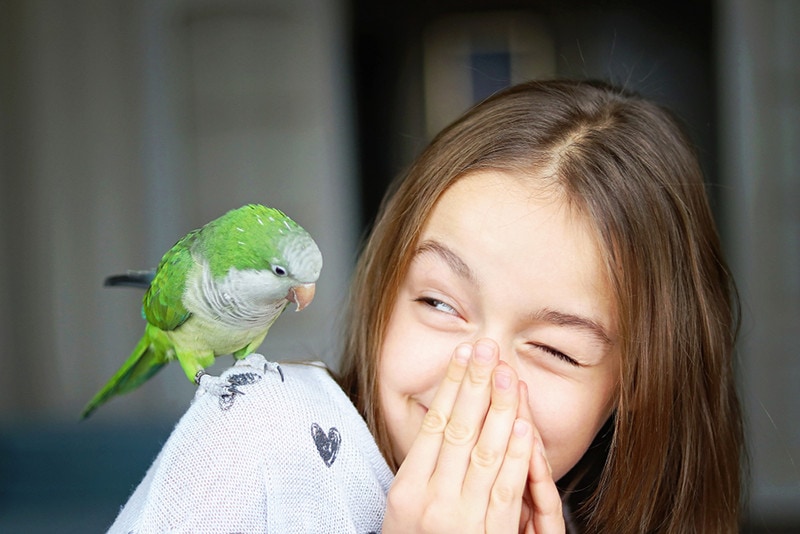
Conclusion
Some parrots make better apartment dwellers than others. When looking for a new pet parrot, make sure to consider their size, temperament, and activity levels to see if they’d be a good fit for apartment life. It’s also important to provide plenty of exercise and playtime opportunities for your parrot to keep them happy and prevent boredom. Doing a combination of these types of things will make it very possible for a parrot to live happily in an apartment and minimize the volume of noise that they make.
See Also:
Featured Image Credit: Mario Snchz, Shutterstock


